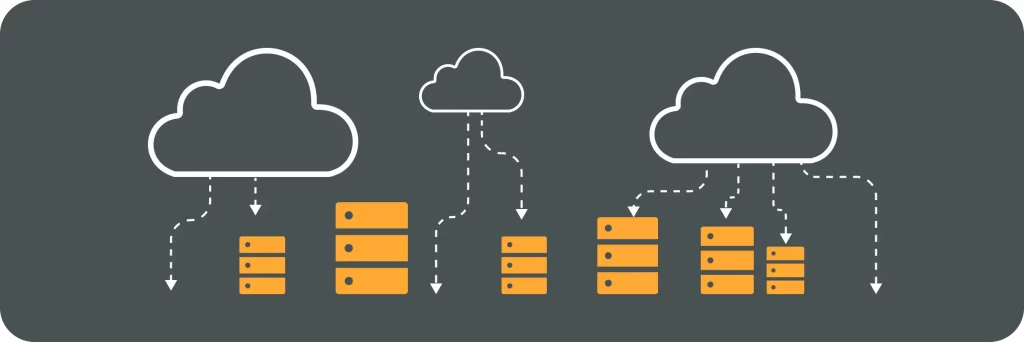DevOps is a concept that has gained significant popularity in the software development industry. It refers to a set of practices and methodologies aimed at improving collaboration and communication between development and operations teams within an organization. The goal of DevOps is to enhance the efficiency and quality of software delivery, ensuring that applications are built, tested, and deployed seamlessly.
Understanding the Concept of DevOps
In order to fully comprehend the significance of feature branching within the DevOps lifecycle, it’s essential to first understand the evolution and key principles of DevOps.
The Evolution of DevOps
The concept of DevOps emerged as a response to the challenges faced by organizations in delivering software rapidly and reliably. Traditionally, software development and operations teams worked in silos, causing delays in the release cycle. Developers would focus solely on writing code, while operations teams would handle deployment and maintenance. This division often led to miscommunication, bottlenecks, and a lack of accountability.
However, as technology advanced and the demand for faster software delivery increased, organizations realized the need for a more collaborative and efficient approach. DevOps emerged as a result of the need for closer collaboration, automation, and continuous integration and deployment. It aimed to bridge the gap between development and operations, enabling teams to work together seamlessly and deliver high-quality software at a faster pace.
Key Principles of DevOps
DevOps is built upon several key principles that guide its implementation. These principles include continuous integration, continuous delivery, infrastructure as code, and monitoring and feedback.
Continuous integration is the practice of frequently merging code changes into a shared repository. By doing so, developers can identify and resolve conflicts early on, ensuring that the software remains stable and functional. Continuous delivery, on the other hand, focuses on automating the release process. It involves building, testing, and deploying software in a consistent and repeatable manner, reducing the risk of errors and enabling faster time to market.
Infrastructure as code is another fundamental principle of DevOps. It involves managing and provisioning infrastructure through code, rather than manually configuring servers and environments. This approach allows for greater scalability, flexibility, and consistency, as infrastructure can be easily replicated and version-controlled.
Lastly, monitoring and feedback play a crucial role in DevOps. By continuously monitoring the performance and usage of software, organizations can identify bottlenecks, detect issues, and gather valuable insights. This feedback loop enables teams to make data-driven decisions, improve the quality of their software, and enhance the overall user experience.
By adhering to these principles, organizations can achieve improved productivity, faster time to market, and better customer satisfaction. DevOps is not just a methodology or a set of tools, but a cultural shift that fosters collaboration, automation, and continuous improvement. It empowers teams to work together towards a common goal, delivering high-quality software that meets the ever-evolving needs of users.
The Role of Feature Branching in DevOps
Feature branching is a fundamental aspect of DevOps that plays a crucial role in enabling teams to work on new features or bug fixes without disrupting the main development branch. It allows for parallel development and ensures that changes can be made independently, without affecting other codebases.
What is Feature Branching?
Feature branching refers to the practice of creating a separate branch or workspace within a version control system (VCS) for the development of a specific feature or bug fix. This branch allows developers to work on the feature in isolation, without interfering with the main codebase.
The Importance of Feature Branching
Feature branching provides several benefits. Firstly, it allows developers to work on features concurrently, speeding up the development process. Additionally, it enables code reviews and testing to be conducted on the feature branch without affecting the stability of the main branch. Furthermore, feature branching promotes better collaboration and reduces conflicts between team members working on different features.
Moreover, feature branching allows for better version control. By creating separate branches for each feature or bug fix, developers can easily track and manage changes specific to that particular task. This level of granularity ensures that any modifications made in the feature branch can be traced back to the specific feature or bug fix it was intended for.
Furthermore, feature branching facilitates experimentation and innovation. With the ability to work on features independently, developers have the freedom to explore new ideas and implement them without the fear of breaking the main codebase. This fosters a culture of creativity and continuous improvement within the development team.
Additionally, feature branching enhances the overall stability of the codebase. By isolating the development of new features or bug fixes in separate branches, the risk of introducing bugs or conflicts into the main branch is minimized. This ensures that the main branch remains stable and can be deployed to production without any issues.
The Process of Feature Branching
Implementing feature branching requires following a specific process to ensure effective collaboration and code integration. Let’s examine the steps involved in feature branching within the DevOps workflow.
Steps Involved in Feature Branching
- Identify the feature or bug fix: The first step is to identify the specific feature or bug fix that needs to be implemented. This could be based on user feedback, business requirements, or identified issues.
- Create a new branch: Once the feature is identified, create a new branch within the version control system for this feature. This branch will act as an isolated workspace for developing and testing the feature.
- Implement the feature: Develop and test the feature within the feature branch. This involves writing code, conducting code reviews, and performing automated tests to ensure the feature meets the desired quality standards.
- Merge the branch: Once the feature is complete and tested, merge the feature branch back into the main development branch. This involves resolving any conflicts or issues that may arise during the merge process.
- Testing and deployment: After merging, conduct further testing to ensure that the feature functions as intended. Finally, deploy the updated code to the production environment.
Tools and Technologies for Feature Branching
There are several tools and technologies available that support feature branching in the DevOps workflow. Version control systems like Git, Mercurial, and Perforce provide extensive branching and merging capabilities. Continuous integration and deployment tools such as Jenkins, CircleCI, and GitLab CI/CD can automate the process of building, testing, and deploying feature branches.
When it comes to implementing feature branching, it is important to consider the potential benefits and challenges that may arise. By using feature branches, development teams can work on different features or bug fixes simultaneously, without interfering with each other’s work. This allows for parallel development and faster delivery of new features.
However, feature branching also introduces some complexities. As multiple branches are created, it becomes crucial to manage and keep track of them effectively. It is important to have a clear naming convention for branches and establish guidelines for merging and resolving conflicts. This ensures that the codebase remains clean and manageable.
Additionally, it is essential to have a robust testing and deployment strategy in place. With feature branching, each branch may have its own set of changes and updates. Therefore, thorough testing is required to ensure that the merged code functions seamlessly with the existing codebase. Automated testing tools and continuous integration pipelines can help streamline this process and ensure the quality of the software.
Overall, feature branching is a valuable practice in the DevOps workflow, enabling teams to work efficiently and deliver high-quality software. By following the defined steps and utilizing the right tools and technologies, development teams can effectively implement feature branching and enhance their collaboration and code integration processes.
Best Practices for Feature Branching in DevOps
While feature branching provides numerous advantages, it is vital to follow best practices to ensure smooth integration and collaboration within the DevOps environment.
Planning and Coordination
Prioritize proper planning and coordination for feature branching. Clearly define the features, assign responsibilities, and establish timelines. Regular communication and coordination between team members help streamline the development process and minimize conflicts.
Testing and Quality Assurance
Perform thorough testing and quality assurance checks on feature branches before merging them into the main development branch. Automated tests, code reviews, and continuous integration can help identify and rectify any issues early in the development process.
Additionally, it is crucial to consider the impact of feature branching on testing and quality assurance efforts. Each feature branch should undergo comprehensive testing to ensure that it meets the required standards and does not introduce any regressions or bugs into the main codebase.
One effective approach is to establish a dedicated testing environment specifically for feature branches. This environment should closely resemble the production environment, allowing for accurate testing and validation of the new features. By having a separate testing environment, developers can confidently test their changes without affecting the stability of the main development branch.
Furthermore, it is essential to involve quality assurance (QA) teams early in the feature branching process. QA teams can provide valuable insights and feedback during the development phase, helping to identify potential issues and improve the overall quality of the code. Their involvement from the beginning ensures that the feature branches align with the organization’s quality standards and reduces the risk of last-minute surprises during the integration process.
Challenges and Solutions in Feature Branching
While feature branching offers significant benefits, it is not without its challenges. Understanding these challenges and finding appropriate solutions is essential for successful implementation.
Common Pitfalls in Feature Branching
One common pitfall is an excessive number of long-lived feature branches, leading to merge conflicts and delayed integration. Inadequate communication and lack of coordination between team members can also result in conflicts and reduced productivity.
Overcoming Challenges in Feature Branching
To overcome these challenges, adopt a streamlined approach to feature branching. Limit the number of long-lived branches and encourage frequent merges to reduce conflicts. Foster effective communication and collaboration between team members through regular stand-ups, code reviews, and feedback sessions.
In conclusion, feature branching is a crucial aspect of the DevOps workflow that enables parallel development, collaboration, and smooth integration of new features and bug fixes. By following best practices and overcoming challenges, organizations can effectively leverage feature branching to enhance their software development process and achieve faster time to market with improved quality.




